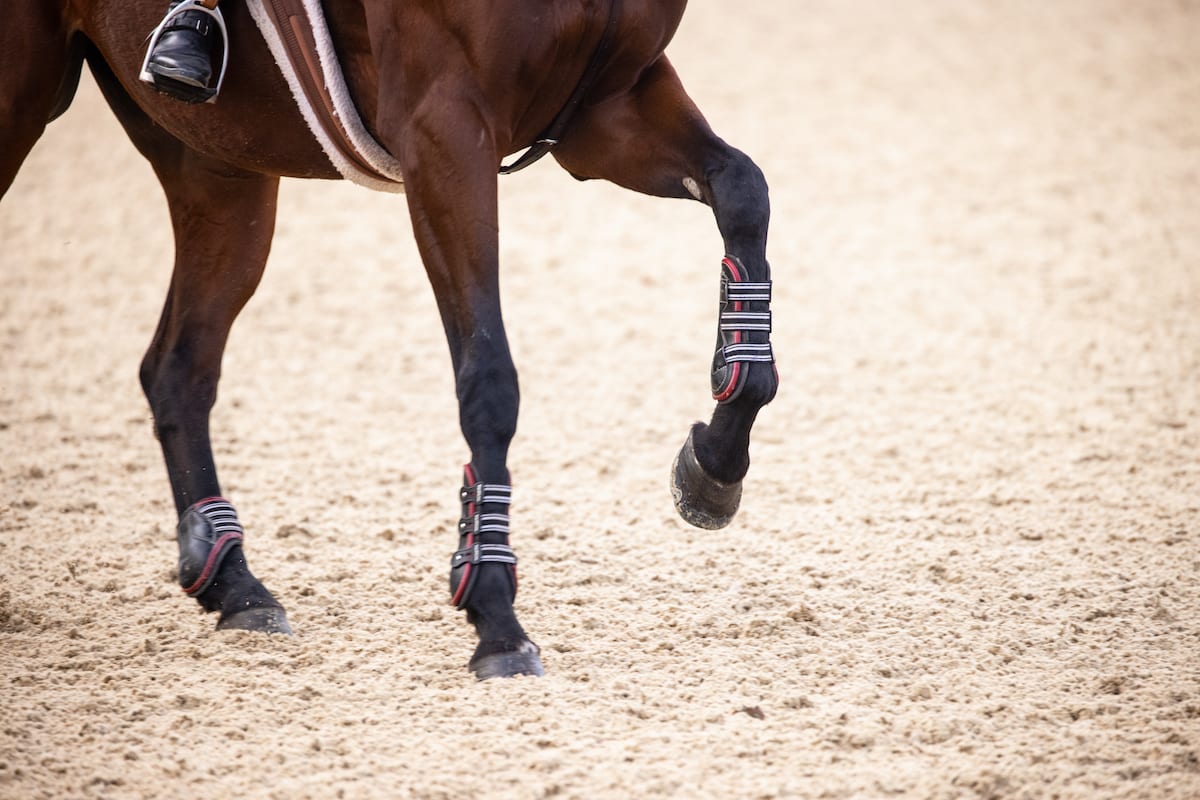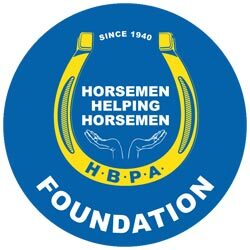The industry is making headway in protecting racehorses’ sensitive joint tissues — an effort that will help preserve their soundness for racing and beyond.

Courtesy Bethany P Photography
Imagine a clock that runs continuously from the first time it is wound, grinding its gears day in and out. Such pristine instruments require careful handling and scheduled maintenance for those delicate parts to perform their jobs. Take the Clock Tower at the Palace of Westminster in London, home of Big Ben, for example. Built in the late 1800s, the clock was cleaned and cared for by a compassionate horologist, surviving two World Wars until it finally suffered its first real maintenance issue in 1976. The Clock Tower is currently scheduled for a $47 million servicing in 2017 to ensure it continues to function for the foreseeable future.
Now think of a racehorse, with multiple moving parts — joints — that must function like clockwork for smooth, frictionless, pain-free movement. For a successful career and continued, long-term function, they must be maintained carefully.
“Joints are one of the most commonly injured body parts in athletic horses, including Thoroughbreds,” says Rick Arthur, DVM, the equine medical director for the California Horse Racing Board and a member of the Racing Medication and Testing Consortium (RMTC). “Preserving joint health on the track is essential not only for the horse’s short-term racing success but also his long-term career off the track.”
Fortunately, joint health has made the list of racehorse safety and welfare initiatives the RMTC and others, such as The Jockey Club, support. Formed in 2001, this national organization was the culmination of years of research on racehorse safety, including uniform medication usage and post-race testing.
How Joint Injuries Occur
Joints exist where at least two bones meet. The ends of those bones are lined with a layer of tissue called articular cartilage that cushions the load transferred between the bones during weight-bearing. The articular cartilage is lubricated by a viscous synovial fluid within the joint capsule. Several soft-tissue structures contribute to the joint’s overall stability, such as collateral ligaments on the inner and outer aspects of the limbs outside the joints.
Injury and joint disease can occur at any point during a Thoroughbred’s career, and factors affecting the joints add up even before birth. The dam’s diet, the newborn foal’s diet, environment, genetics and the amount of exercise or turnout a growing foal gets all play a role in overall joint health.
Veterinarians assess a future racehorse’s musculoskeletal system frequently as he ages. Foals diagnosed with developmental orthopedic disorders, such as osteochondrosis or angular limb deformities, often undergo surgery to correct these conditions. Yearlings and 2-year-olds typically arrive at commercial sales with complete sets of radiographs (X-rays) of all the major joints. Veterinarians and owners scrutinize the joints to ensure they are healthy and disease-free at the time of sale — any abnormality can place stresses on the joint, which ultimately translate into pain, swelling and inflammation of the joint and associated soft-tissue structures.
Young horses in training are still growing, and their bones “turn over” continually, adapting to the level of work they’re performing. This takes time, which is why young Thoroughbreds must be trained carefully.
“The bones of a Thoroughbred racehorse are not shaped or conditioned to withstand the rigors of racing at birth,” says Scott Palmer, VMD, Dipl. ABVP, equine medical director for the New York State Gaming Commission (NYSGC). The primary “window of opportunity” for successful bone modeling is in the horse’s 2-year-old year, he says, when the bones are most responsive to appropriate exercise stimulation. A body of scientific research shows that horses that trained and raced during their 2-year-old year have longer, more successful racing careers and are less likely to be injured than those starting training later in life.
“Horses need the appropriate level of training to develop strong, healthy bones capable of withstanding the concussive forces the musculoskeletal system experiences during a race,” says Arthur. “On the other hand, overtraining can result in inflammation in the joint, bone fractures and joint chips — fragments of bone that break off inside joints.”
Each of these injuries results in swelling, heat, pain and lameness. Horses require time off until they are sound enough to start the process over again, delaying their racing career.
Treating the Issue
A popular insurance company slogan suggests retirement can begin at 55, leaving decades to enjoy fun in the sun (or so say the commercials). Imagine offering retired racehorses the same luxury — timely retirement and a productive new life. This is essentially one of the RMTC’s goals.
Avoiding joint injury through appropriate training would be an ideal way to maximize joint health and longevity. Each horse is unique, however, and the daily wear and tear of simply being an elite athlete can cause inflammation, to which articular cartilage is exquisitely sensitive. In the presence of inflammation, it begins to break down. And without a healthy lining of articular cartilage, frictionless motion required for efficient, pain-free locomotion is interrupted.
“This is where medications and joint injections come into play,” says Arthur.
These serve an import role in maintaining soundness by controlling inflammation due to normal joint wear. One commonly used medication is the oral anti-inflammatory drug phenylbutazone or “Bute.”
Veterinarians can also deliver medications directly to the joint to help diagnose where an injury has occurred (e.g., local anesthetics such as lidocaine) or help control inflammation. These can help minimize inflammation and, therefore, articular cartilage degeneration. Without abrogating inflammation, cartilage continues to break down, ultimately resulting in degenerative joint disease (osteoarthritis), an incurable progressive, painful condition that leads to decreased performance and retirement from work.
Although joint injections are designed to help, indiscriminate use of corticosteroid anti-inflammatory drugs can actually harm articular cartilage. Luckily, vets and trainers are aware of this potential effect, thanks to efforts such as the Grayson Jockey Club Welfare and Safety Summits. We now know there are limits to their use.
So, Is This the Best We Can Do?
For many years veterinarians treated arthritis in racehorses exclusively with systemic and intra-articular (in the joint) anti-inflammatory therapy, including a range of intra-articular corticosteroid preparations designed to reduce joint inflammation. While these drugs are very effective at doing this, for the most part they provide limited ability to correct the underlying pathology (disease or damage) within the joint itself. In fact, says Palmer, one of the most popular and long-lasting intra-articular corticosteroid medications, methylprednisolone acetate, or “Depomedrol,” actually has been shown to dehydrate the articular cartilage when administered over time and while the horse continues to train.
Current state-of-the-art treatment of inflammatory joint conditions in racehorses now includes a combination of disease-modifying and symptom-modifying medications. Disease-modifying medications include hyaluronic acid and polysulfated glycosaminoglycan that not only have some anti-inflammatory effect but also improve the synovial fluid’s quality and lubrication. Biologic preparations (interleukin-1 receptor antagonist protein and platelet-rich plasma), says Palmer, interrupt the cartilage-degrading biochemical changes in the joint and introduce healing growth factors. Veterinarians can also use intra-articular stem cell therapy to help promote healing of cartilage and the synovial membrane.
Says Palmer, “Change in a sport like horse racing that is rich in tradition is difficult, but the increased use of disease-modifying medication in the joint and the reduction of the amount and dose of concurrent corticosteroid use has definitely improved the joint health of racehorses in a way not possible in the past.”
Another key to successful long-term management of racehorse injury, he notes, is understanding that lameness is not the problem, but rather a symptom of a problem. Increased use of diagnostic tests such as local anesthesia and advanced imaging techniques (digital radiography, computed tomography and MRI) are providing new insight into joint pathology. This leads to more informed decisions being made to treat underlying pathology within the joint and improved outcomes.
For example, by pinpointing a specific joint or joints as the source of lameness, veterinarians can inject fewer joints. This puts therapy where it needs to be and can also lower the veterinary bill. Further, new research shows that intra-articular corticosteroids’ beneficial effects can be achieved with lower doses and at less frequent intervals than previously thought.
Regulatory Efforts
“There are strict reporting regulations in place in most states with horse racing, including California and New York,” says Arthur. There, all horses receiving intra-articular corticosteroid injections must be reported to their respective racing authority.
In turn, racing authorities track intra-articular medication use, ensuring trainers are following the withdrawal times appropriately and testing horses after racing to be sure levels of certain medications in their systems fall below the reported threshold values.
In 2012 the NYSGC created an electronic database (equine steroid administration log, or ESAL) for trainers to report intra-articular corticosteroid injections. Information stored here is automatically transferred to the new trainer of a claimed horse, informing them of any administrations within 60 days of the claim.
“This provides useful information to the new trainer and owner with equine welfare in mind by preventing needless repeated joint injections of claimed horses,” says Palmer.
The RMTC’s website shows allowable limits for two intra-articular corticosteroids. The anti-inflammatory triamcinolone acetonide, for instance, cannot be administered within seven days of racing and a horse must not have ≥100 picograms/milliliter of plasma or serum when tested following a race. In contrast, methylprednisolone cannot be administered within 21 days of a race, and a horse must not have ≥100 picograms/milliliter when tested following a race.
In New York there is an additional requirement that all horses treated with methylprednisolone must test negative before entering a race to ensure there is no active level of this corticosteroid in the body at the time of the race. This regulatory protocol has essentially eliminated methylprednisolone use in New York racehorses.
Finally, the RMTC laboratory accreditation program has worked to ensure all accredited racing labs in North America are testing for the appropriate drugs and levels. This uniform standard of testing is yet another step toward controlling the amount and types of medication being administered to racehorses.
The Fruits of the Industry’s Labors
Changes in racing regulations instituted over the past several years are designed to not only maximize racehorse safety and welfare on the track but also ensure that OTTBs are retiring sounder than ever.
“I think it is fair to say the industry has a long way to go, but it is very clear that horse safety and welfare issues are now a first-level consideration and not an afterthought, as it may have been in the past,” says Arthur.
Thanks to the combined efforts of veterinarians, trainers, racing regulators and industry organizations devoted to retraining and rehoming Thoroughbreds, more OTTBs can enjoy competing in other disciplines well into their golden years.
“Career management of racehorses used to mean simply getting into the winner’s circle,” says Palmer. “With an increased emphasis upon stewardship, career management for racehorses now includes welfare protocols designed to help them successfully transition into new careers.”
Retired Racehorse Project believes the stigmas OTTBs have are many, but the argument that racing leaves them unsound is the most destructive. More than past bone, tendon or ligament injuries, we know it is joint health that often determines a racehorse’s future use. The RRP applauds the RMTC’s work to establish drug thresholds for substances injected into joints; this is potentially a game changer for those working to promote OTTBs in the riding industry.
This article was originally published in the Fall 2016 issue of Off-Track Thoroughbred Magazine, the only publication dedicated to the Thoroughbred ex-racehorse in second careers. Want four information-packed issues a year delivered to your door or your favorite digital device? Subscribe now!

